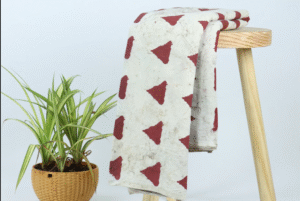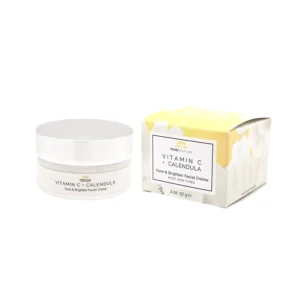
Silk has long been associated with luxury, elegance, and sophistication. For centuries, it has been a staple in high-end fashion, home decor, and accessories. However, as consumers become more environmentally conscious, there is a growing demand for eco-friendly materials. Among these, silk produced with sustainable methods is gaining attention as a premium alternative to traditional silk, offering the same opulence without compromising on ethics or environmental responsibility.
In this blog, we will explore how sustainable silk is transforming the textile industry, providing a more ethical and eco-conscious choice for those who want the beauty of silk with a lighter environmental footprint.
The Environmental Impact of Traditional Silk
Traditional silk production is both labor-intensive and resource-heavy. Silkworms are typically farmed to produce silk threads, and in conventional methods, the silkworms are often boiled alive to extract the silk from their cocoons. This raises both ethical concerns and environmental issues. Silk farming requires significant amounts of water and land, contributing to the depletion of resources and ecosystem damage.
Additionally, the dyeing and processing of silk often involves the use of harmful chemicals, which can have a negative impact on the environment and workers. This traditional model of silk production has been widely criticized for its high carbon footprint and the ethical dilemmas surrounding animal welfare.
What Makes Silk Sustainable?
Sustainable silk differs from conventional silk in several ways. It focuses on minimizing environmental damage and promoting ethical practices in production. Sustainable silk fabric is created using methods that reduce water waste, eliminate harmful chemicals, and ensure the silkworms are treated with respect.
-
Ethical Silkworm Farming: In sustainable silk farming, silkworms are allowed to live their full life cycle, and the silk is harvested after they emerge from their cocoons. This practice, known as Ahimsa or “peace silk,” ensures no harm is done to the silkworms, making it an ethical choice for environmentally conscious consumers.
-
Organic Practices: Many sustainable silk producers use organic farming techniques, such as growing mulberry trees without pesticides or chemicals. These practices help protect the soil and water quality and promote biodiversity, making the entire silk production process more eco-friendly.
-
Eco-Friendly Dyeing and Processing: The dyeing and finishing of sustainable silk fabric are done using natural or non-toxic dyes that are free from harmful chemicals. This reduces the environmental impact of silk production, ensuring that it is as green as possible throughout its life cycle.
Why Choose Sustainable Silk?
There are several compelling reasons why sustainable silk is becoming a preferred choice for consumers and designers:
-
Environmental Benefits: By choosing silk made with sustainable practices, consumers help support eco-friendly farming methods and reduce the harmful effects of traditional silk production. These fabrics have a lower carbon footprint and use fewer natural resources, making them a more sustainable option.
-
Ethical Considerations: The ethical aspect of sustainable silk is another key factor. Consumers who prioritize animal welfare can feel good about supporting silk production methods that respect the lives of the silkworms. Sustainable silk offers a cruelty-free alternative to traditional silk production, aligning with the values of those who are conscious of how their purchases impact the world.
-
Luxury with a Conscience: Sustainable silk offers the same luxurious texture and appearance as traditional silk, but with the added benefit of being ethically sourced. Consumers no longer have to choose between luxury and sustainability—sustainable silk delivers both.
-
Support for Local Communities: Sustainable silk often comes from small-scale farmers who use ethical farming practices. By supporting these local farmers, consumers contribute to more sustainable agricultural communities, helping to improve their livelihoods and promote fair labor practices.
The Growing Popularity of Sustainable Silk
As awareness of the environmental and ethical impact of traditional silk production grows, more designers, fashion houses, and consumers are opting for sustainable silk fabric. Several trends indicate that this eco-friendly material is becoming a prominent feature in both the fashion and textile industries:
-
Innovations in Silk Production: There has been increasing interest in lab-grown silk and bioengineered alternatives. These innovations aim to replicate the qualities of natural silk without involving silkworms in the process. While still in the early stages, these technologies could significantly reduce the environmental impact of silk production in the future.
-
Transparency and Certifications: As sustainability becomes a priority for consumers, more companies are adopting transparent practices and obtaining certifications that confirm their materials are ethically sourced. This helps consumers make informed decisions and fosters trust in brands that prioritize sustainability.
-
Widespread Adoption in Fashion: Sustainable silk is beginning to gain more traction on the runways, as fashion designers embrace eco-conscious fabrics. With increasing demand for sustainable materials, it’s expected that more collections will incorporate sustainable silk, making it a go-to option for luxury fashion.
-
Circular Fashion: The concept of a circular economy, where products are recycled and reused to minimize waste, is gaining momentum in the fashion industry. This includes the recycling of silk garments, reducing the need for new silk production and further conserving resources.
Conclusion
Sustainable silk fabric represents the future of eco-friendly luxury, offering consumers the elegance and beauty of traditional silk while supporting more ethical and environmentally conscious practices. By choosing sustainable silk, consumers not only enjoy the timeless appeal of this luxurious fabric but also contribute to a more sustainable and compassionate fashion industry.
As innovations in sustainable silk production continue to evolve, the industry is poised to embrace a future where luxury and sustainability go hand in hand. The growing demand for eco-friendly fabrics ensures that sustainable silk fabric will play a significant role in shaping the future of fashion, offering a more responsible way to enjoy luxury without compromise.




